
views
Putting Air in the Tank
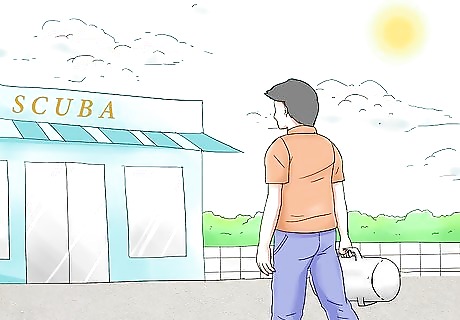
Take your air tank to an air compressor. Full-service gas stations or truck stops are the most common locations that have air compressors. You can use the same pump motorists use to inflate the tires on their vehicles. Inspect your air tank for damage before filling it, and get a new one if you see any cracks or rust. You may also be able to get your tank filled at scuba shops, paintball locations, and some sporting goods stores. You can use your own air compressor. You can purchase one at a home improvement store.
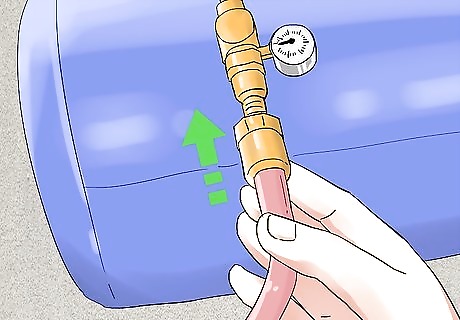
Attach the air hose to the tank’s fitting. Set the tank on the ground, then pull the compressor hose down to the metal valve on top of the tank. It is next to the pressure gauge and usually made of brass, so it is hard to miss. Fit the hose’s nozzle over the spout on the back end of the fitting. Attach the air hose directly to the spout. It should fit right over it with no space between them. Avoid placing the compressor hose where the tank’s air hose attaches on the opposite end of the fitting.

Activate the air compressor to pump air into the tank. Operate the air compressor by following the directions on the pump. Normally, you will need to press a button to activate the compressor. The hose will usually have a trigger you need to pull to begin pumping air. The amount of time needed to fill the tank depends on the tank’s size. Set aside about 20 minutes in order to fill the the tank completely. Keep the tank’s valve closed. The air will still flow into it.
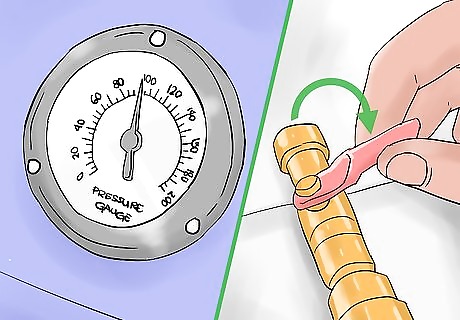
Fill the tank until the pressure is between 85 and 125 psi. Make sure you have a clear view of the pressure gauge. As the tank fills, the gauge’s needle will begin to move. Stop adding air when the needle reaches the labeled red zone on the gauge. Overfilling the tank is dangerous, so never fill it beyond the recommended limit.
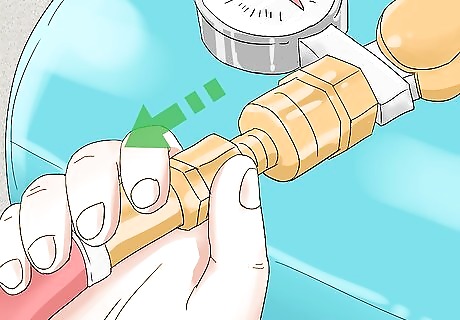
Detach the air hose when the tank is filled. Once you are done pumping air, slide the hose off the brass fitting. All you have to do now is place the hose back in its holster and take your tank home! The tank will be heavier now, so be careful when moving it!
Releasing Air from the Tank
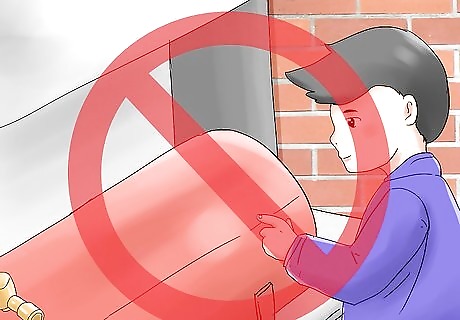
Release the air in a safe, well-ventilated area. The stored air is unsafe to breath and can be flammable. Always release the air outdoors, away from other people. Keep your clothing, hair, and jewelry away from the tank’s hose. Also, keep the tank away from open flames. For their safety, avoid letting children operate the tank.
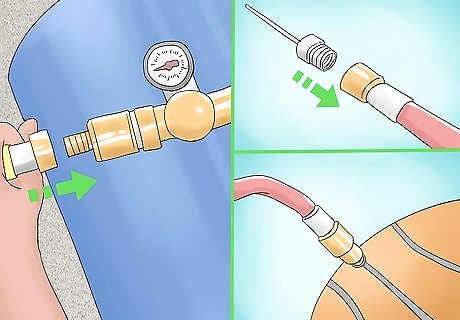
Connect the air hose to the tank and inflatable item. Slide the air hose over the brass fitting near the pressure gauge. It should fit on the opposite end of the small, ringed spout you used to fill the tank. Connect the hose’s other end directly to the item you wish to inflate. An air hose usually is included with the tank when you purchase it. You can get new hoses at home improvement or auto parts stores.
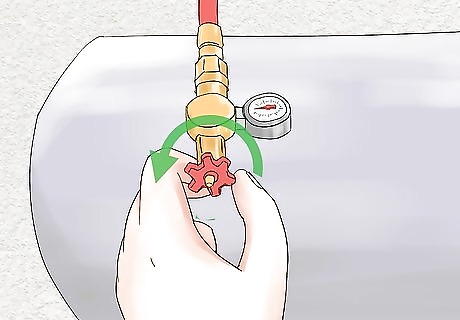
Turn the tank’s wheel to the on position. Look near the brass fitting to find a small, handy wheel. Turn the wheel counterclockwise to open the tank’s valve. You should hear air flowing out of the tank right away.
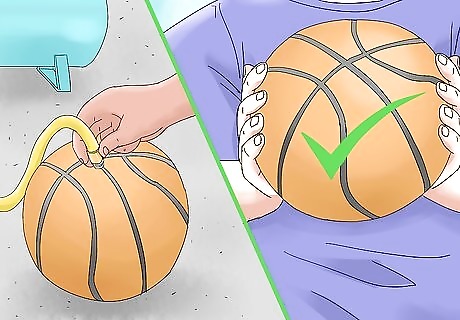
Inflate the item to a safe size. Air will continue to flow until you close the valve again. Watch the inflatable object closely to ensure it is filled at a safe level. Over-inflated items are liable to burst. When an item is inflated to the correct size, it will feel firm to the touch. It should not bulge or appear near bursting.
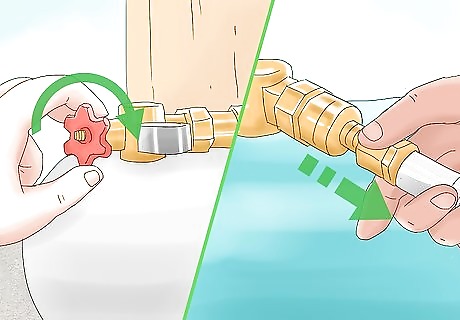
Spin the valve clockwise to shut off the air flow. Listen closely for any hissing coming from the tank, since this indicates that air is still flowing. Make sure the valve is closed completely. When you’re ready, detach the hose to release any air stuck inside of it. If you plan on storing the tank for a while, stay safe by letting all the air out of it.
Storing the Tank Safely
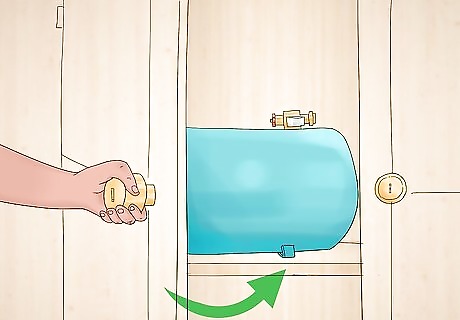
Store the tank in a clean, dry area. Dirt and moisture are the main causes of corroded tanks. Store your tank in a shed, closet, or a similar safe area. Improper storage is likely to taint any air left in the tank and rust the insides. Try to keep the tank around room temperature, especially if you left air in it. Cold temperatures can lead to rust.
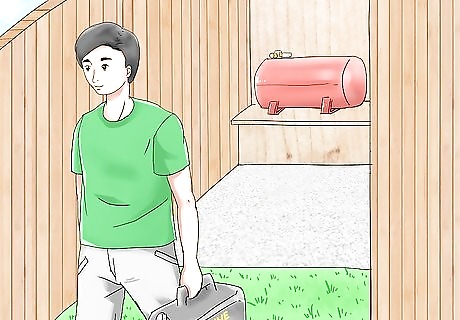
Set the tank away from flammable materials. Store the tank separately from other gases, oil, lighter fluid, and similar materials. Leave the tank uncovered in the storage area. In case of a leak, the tank could cause a fire around flammable materials. It can also explode if the pressure builds up too much. For these reasons, keep the tank away from children and animals.
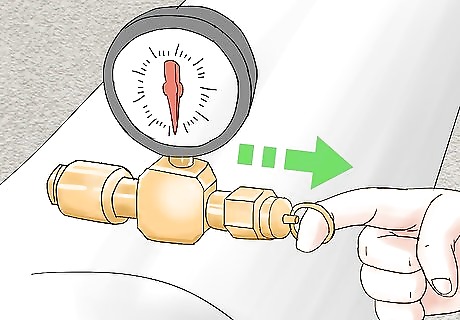
Let the air out before storing the tank long-term. This is to prevent the tank from breaking down or reaching unsafe pressures over time. Look for a small ring on the brass fitting you use to fill the tank. To release the air, pull the ring back until you hear the air hissing out. Wait for it to stop. For safety, it’s best to drain the tank if you won’t use it for 2 or 3 months. If you still wish to store a tank that has air in it, keep it in a temperature-controlled room.
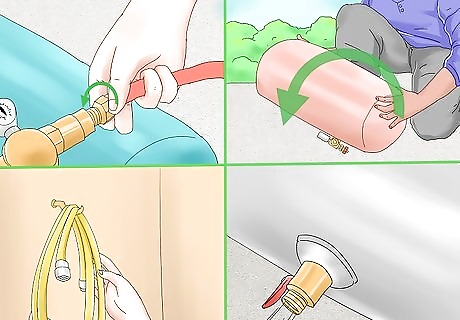
Tip the empty tank over to drain moisture. Make sure the tank is empty before you do this. Then, twist the air hose valve off the tank’s brass fitting and set it aside. Flip the tank over, letting the excess moisture drain out of the fitting. When you’re finished, replace the parts and store the tank in a safe spot. Some tanks have a drainage valve on the bottom end you can unscrew to easily drain out the moisture. Moisture can lead to tank corrosion, so frequent draining helps your tank last longer. Drain it after each use if possible.

















Comments
0 comment